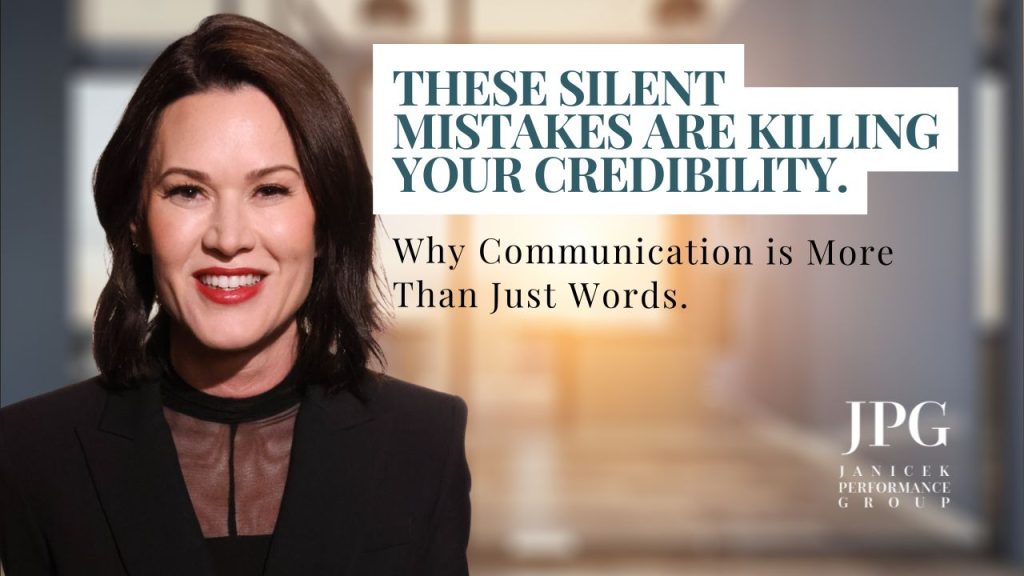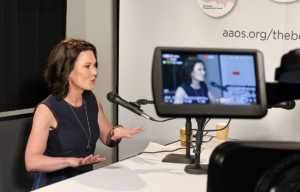How to Influence Without Words
When we think about effective communication, we often focus on words. But the truth is, at least 80% of communication is non-verbal. From your posture to your tone of voice, these silent signals shape how your message is received—before you even say a word.
Why Non-Verbal Communication Matters
Great public speakers don’t just choose the right words—they master how they deliver them. Whether you’re leading a meeting, pitching to investors, or speaking on stage, your body language, vocal tone, and facial expressions impact your credibility and influence.
The Three Pillars of Effective Communication
Communication is more than just words.
It’s a holistic experience that brings together three essential elements. These elements work together to shape how your message is received.
1. Words & Messaging
Your words are important in public speaking, but they make up only a small part of your overall message. While clarity and structure are essential, it’s your delivery and message—your tone, body language, and presence—that determine whether your audience trusts you and remembers your message.
2. Vocal Tone & Inflection
How you say something affects how it’s perceived. Your tone, pitch, speed, and volume influence whether you come across as confident, uncertain, or even disengaged. A flat or rushed delivery can weaken even the strongest message.
3. Body Language & Presence
Your stage presence is often the first impression you make on your audience.
- Do you stand tall and confident or shrink back?
- Do you gesture with purpose or fidget nervously?
- Do you maintain eye contact or avoid it?
How you carry yourself on stage directly influences how your audience perceives and responds to you.
The Landmark UCLA Study on Communication
A groundbreaking study from UCLA called the Mehrabian communication study or 7-38-55 Communication revealed just how much of communication is non-verbal:
- 7% of communication is based on the words you speak.
- 38% comes from your vocal tone (pitch, volume, pace).
- 55% is expressed through body language (posture, gestures, facial expressions).
This means that 93% of what people take away from a conversation is NOT the words themselves — it’s how you say them and how you present yourself. So, how you say something and how you present yourself can have a far greater impact than the content of your speech.
The Consequences of Poor Non-Verbal Communication
How you present yourself physically plays a crucial role in the effectiveness of your message. As a public speaker, if your body language doesn’t align with your words, it can undermine your credibility.
- Slouching might make you appear disengaged,
- Avoiding eye contact can signal insecurity or dishonesty
- A monotone voice can make even the most captivating topic seem dull.
When your audience sees a disconnect between what you’re saying and how you’re saying it, they’ll tend to trust what they observe over what they hear, weakening the impact of your presentation.
How to Master Non-Verbal Communication
The best leaders, executives, and public speakers actively train their non-verbal communication to enhance their influence.
Here’s how you can begin improving yours:
1. Record Yourself Speaking
Watch how you naturally move and speak. Do you use open gestures? Do you fidget? Self-awareness is the first step toward improvement. Practice makes perfect.
2. Make Eye Contact
Strong eye contact builds trust and keeps your audience engaged. Aim for three to five seconds of eye contact per person before shifting.
3. Adjust Your Tone
Vary your pitch, volume, and pacing to emphasize key points. A well-placed pause can be just as powerful as a strong statement.
4. Align Your Body Language with Your Message
If you’re talking about confidence, stand tall and open up your posture. If you’re expressing concern, let your facial expressions reflect it. Your words and non-verbal cues should work together.
Speak with More Than Just Words
The way you carry yourself speaks louder than words. Whether you’re leading a team, negotiating a deal, or giving a keynote, mastering non-verbal communication will make you more persuasive, confident, and memorable.
Want to refine your executive presence and leadership communication? At Janicek Performance Group, we help leaders elevate their impact through public speaking coaching. Reach out today.





